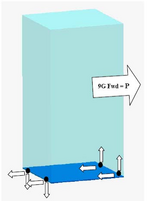enachicago
Aerospace
- Feb 3, 2025
- 9
Hello everyone,
I'm currently working on a structural analysis for an aircraft cabin interior furnishing. In my research, I came across guidance in the Boeing D6-55441 document that discusses test fixture validation and the determination of whether a component should be modeled/tested using a rigid support or if its actual stiffness values need to be explicitly simulated. However, I'm having trouble interpreting the exact criteria or thresholds regarding when to use a rigid support assumption versus when to incorporate specific stiffness values into the analysis/test for structure/unit. Are there specific thresholds or guidelines or related industry standards that indicate when the structure/unit should be considered statically indeterminate rather than determinate? Any practical examples or case studies that illustrate this decision-making process for cabin interior furnishings with attachment(hardpoint or seat track, etc.) or any type of structure?
I'm currently working on a structural analysis for an aircraft cabin interior furnishing. In my research, I came across guidance in the Boeing D6-55441 document that discusses test fixture validation and the determination of whether a component should be modeled/tested using a rigid support or if its actual stiffness values need to be explicitly simulated. However, I'm having trouble interpreting the exact criteria or thresholds regarding when to use a rigid support assumption versus when to incorporate specific stiffness values into the analysis/test for structure/unit. Are there specific thresholds or guidelines or related industry standards that indicate when the structure/unit should be considered statically indeterminate rather than determinate? Any practical examples or case studies that illustrate this decision-making process for cabin interior furnishings with attachment(hardpoint or seat track, etc.) or any type of structure?

